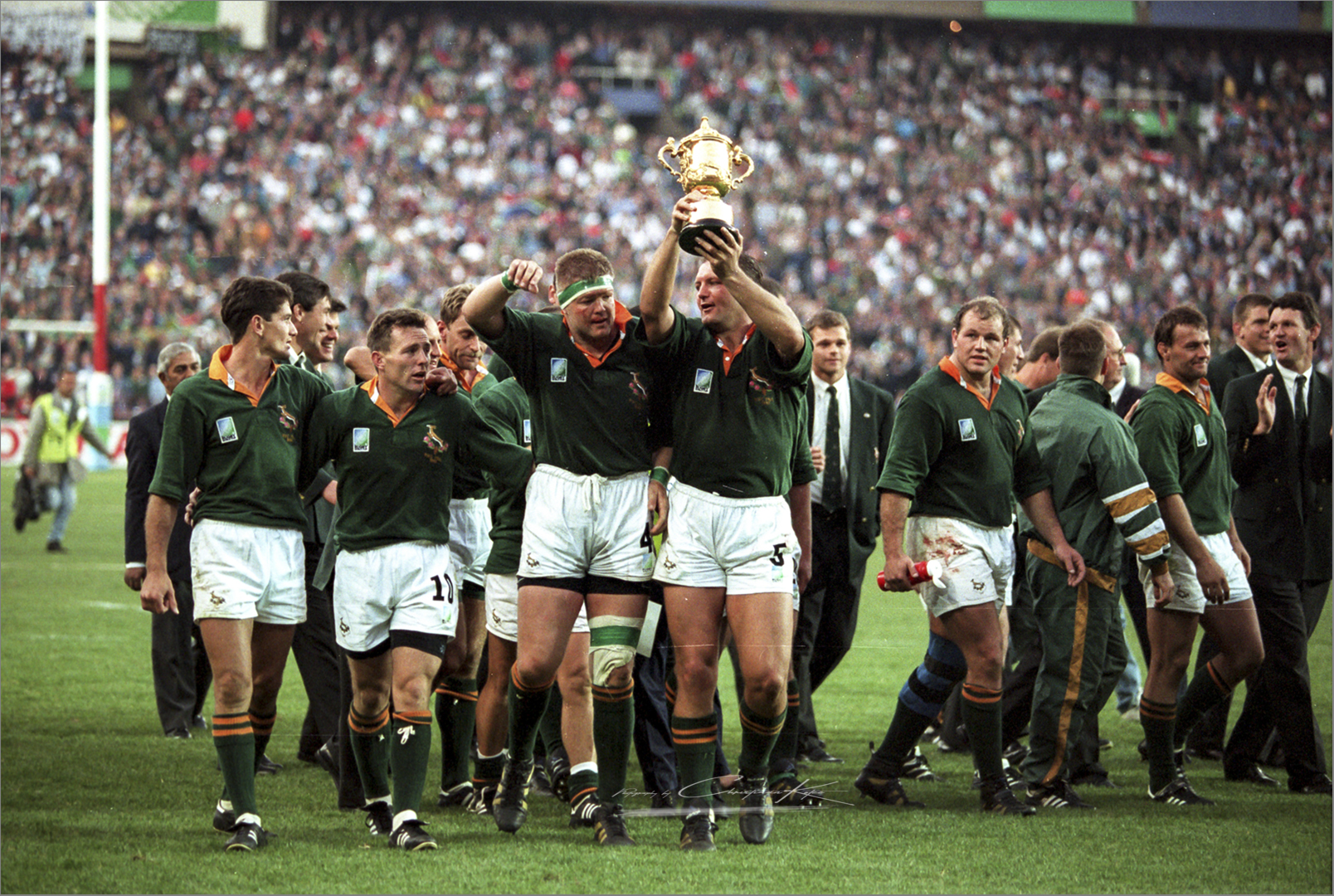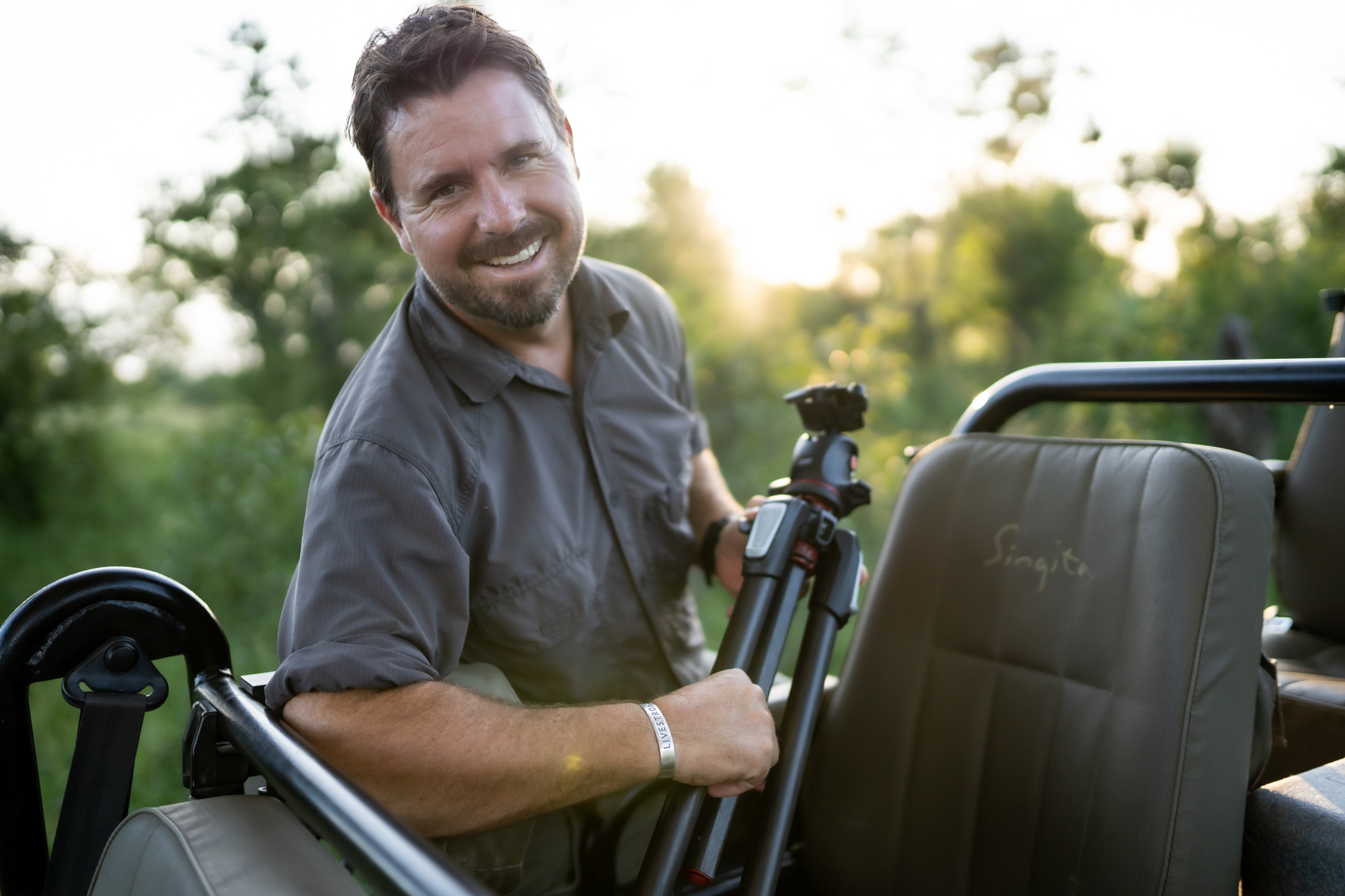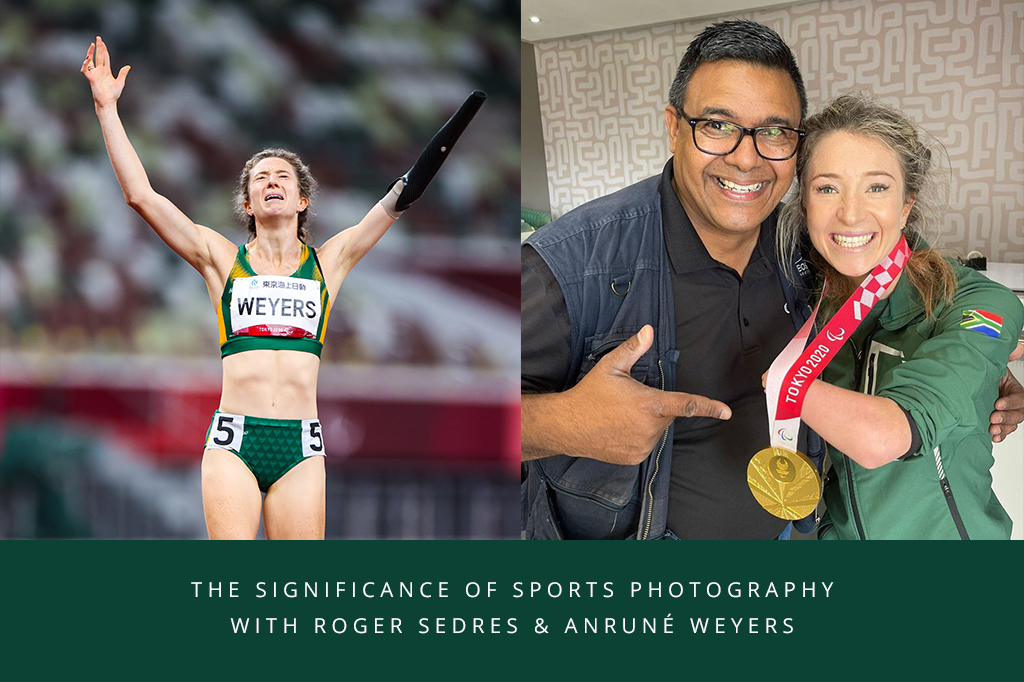Christiaan Kotze is a legendary South African sports photographer who has photographed some of the most historic South African sporting events. From the Springboks winning their first Rugby World Cup in 1995 to Wade van Niekerk winning gold at the 2016 Rio Olympics. If South Africa is making history, you can trust that Christiaan Kotze will be there to capture all the glory. We caught up with the renowned photographer to find out how he gets the shot every time.
Please tell us a little about yourself.
I was Born in Louriesfontein in Namaqualand. I spent my formative years in Cape Town and attended high school in Pretoria. After studying Interior design in the 80s, I started a career as a photojournalist spanning 24 years at Beeld Newspaper as a junior photographer in 1992. I worked my way through the ranks to become The Beeld’s Chief Photographer in 2001. During this time, I covered conflict and breaking news stories, from the uprising in Bophuthatswana, the Inauguration of South Africa’s first democratically elected President, Nelson Mandela, and the Springboks winning the 1995 Rugby World Cup in South Africa.
I have won numerous awards at the Ilford Photo Press Awards and later the Fuji Photo Press Awards. In 2001, I joined the Rapport Sunday Newspaper as Chief Photographer and specialised in Sports photography. I’ve had the privilege of covering the 1995, 2007, 2011, and 2015 Rugby World Cups in South Africa, France, New Zealand and England. I’ve also been privileged to have photographed 150 Springbok test matches.
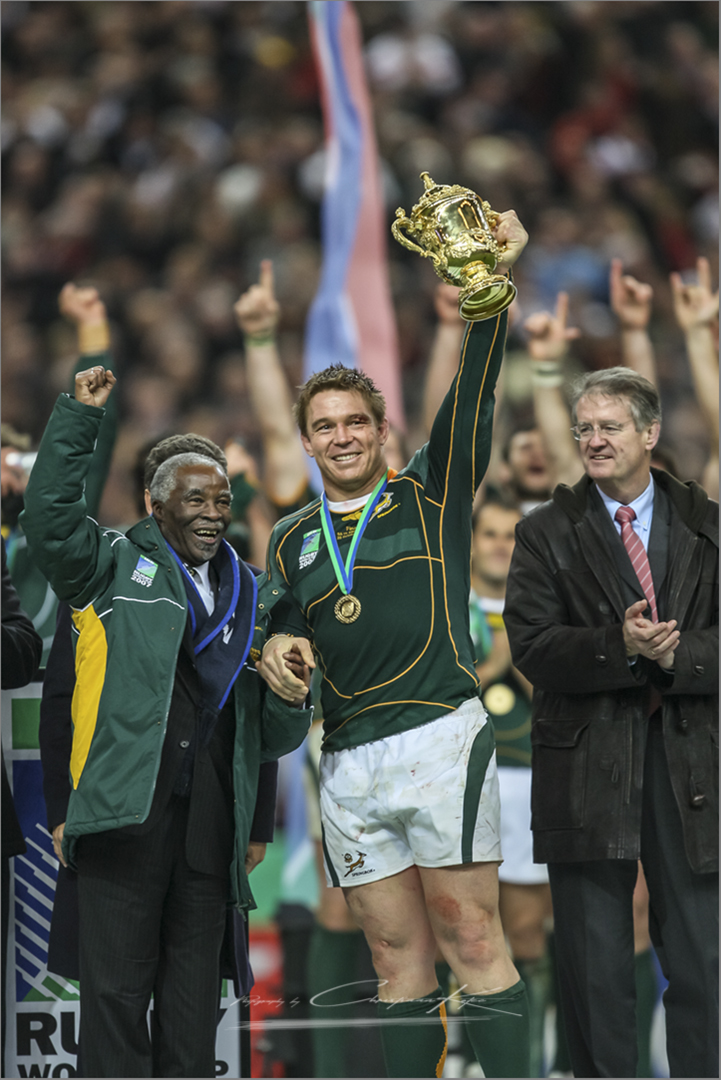
The 2008 Beijing Olympics and Rio 2016 Olympic Games is a highlight of my sporting career. I photographed the last two Formula One races held in South Africa in 1992 and 1993, the 1992 Motor GP races in South Africa, the 1999 to 2004 Races at the Phakisa Freeway in Welkom and the 1994 Formula 1 Power Boating.
I have had a keen interest in wildlife photography since starting photography as a student. I have won awards at the Fuji Getaway Awards in the Sasol Birds and Animal Behaviour categories. I have had the privilege of photographing the Kgalagadi Transfrontier Park, The Kruger National Park, The Etosha National Park and the Chobe National Park.
I regularly share my 30 years of experience as a photojournalist with young photographers through talks, seminars and workshops. I retired from the Newspapers in 2015 and am now a Freelance Sports Photographer. After all the years as a photojournalist, I joined the AFO Photographic Club in 2016. I have achieved my FPSSA honours in 2018.

What inspired you to become a sports photographer, and what do you enjoy most about the field?
I was a Photojournalist for almost ten years, and then in 2001, I was recruited to take over the Chief Photographer position at Rapport Newspaper. This meant that I would specialise in Sports Photography from then on and run the photo department. Up until this time in my career, I almost worked 24/7 and 7 days a week. This shift gave me the chance to be with my family a bit more and concentrate on developing my sports photography to the highest level. As a sports photographer, your office view changes every time you move between the different sports codes that you get to photograph. This gives you a bit of freedom away from a boring office environment.
What are some of the unique challenges you face when photographing sporting events?
Preparing yourself to deal with the increase in traffic on a game day. Will the Stadium/Union provide media parking? This is usually collected earlier in the week. Will WIFI be provided? Will power points be accessible for charging laptops? Will access to the field be safe, and not have to walk through the public? There are syndicates that target photographers to steal their equipment.
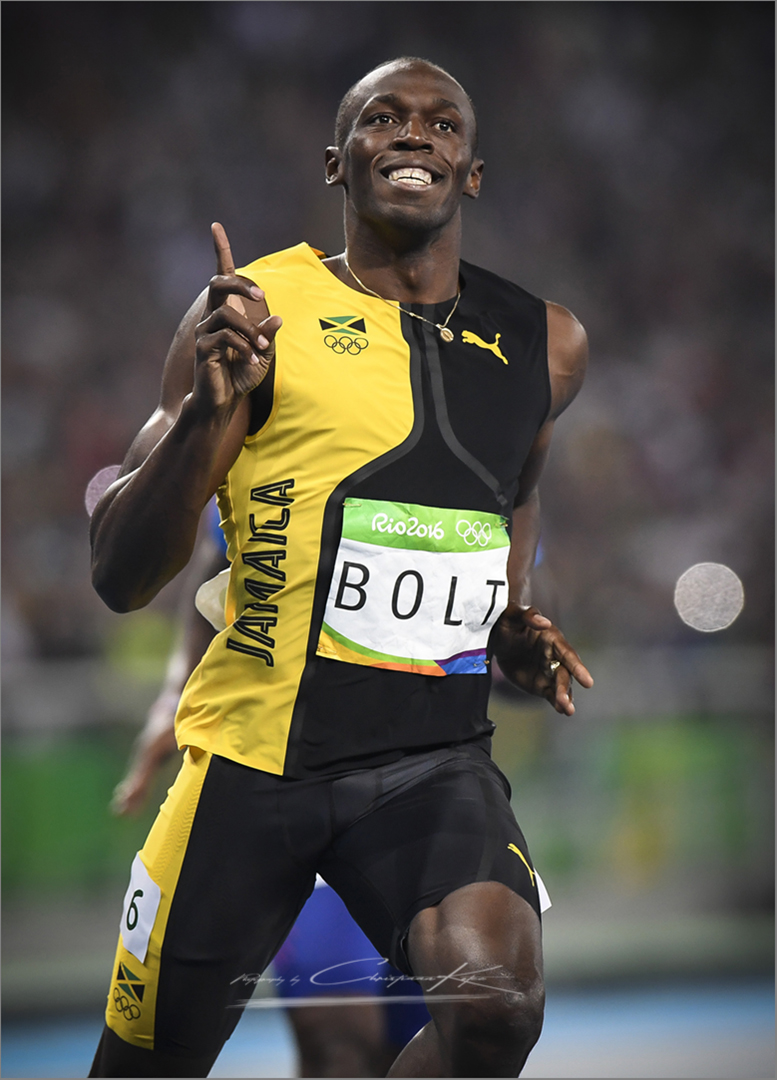
Sports events often present challenging shooting conditions. How do you handle low-light situations, fast action, or adverse weather while shooting?
The DSLR cameras we have today are a great advantage for photographers who shoot indoor sports and sporting events that happen under lights. Most sporting codes today prefer to have their matches scheduled to TV broadcasting PRIME times and that happens at night. Most international stadiums have good lights to adhere to the TV requirements. So shooting at ISOs of 2000/ 2500 is not a problem anymore. This gives you the ability to have at least a minimum 1/1250 shutter speed for freezeframe action. This goes hand-in-hand with having f2.8 lenses. When the havens open and a deluge of rain is dumped on the game you, have to have rain covers for your equipment before looking at yourself. Two manufacturers come to mind, Aquatec Sport Shields (AquaTech SSRC Large Sport Shield Rain Cover, and Think Tank (Think Tank Hydrophobia) which have some of the best raincoats to protect your equipment in adverse weather.
Sporting events are fast-paced and dynamic. How do you ensure that you capture the most crucial moments and emotions in sports events?
You must understand the game that you are photographing. You have to know how the play will proceed during the match to position yourself at the right place to capture the height of action as it approaches you. It is no good if the players run away from you and you cannot see their faces. This means total concentration on the match. It does not matter if it is an hour or the whole day. It is of paramount importance that the photographer teaches him/herself NOT to chimp at the LCD screen moments after taking an action shot. This will for sure make you miss the celebration moments that will follow after this. For most publications, the rule of thumb is that the height of action photos will go to the Sports pages at the back and the celebration photos to the front pages that’ll sell those publications. So both of these types of sports photographs are important to capture.
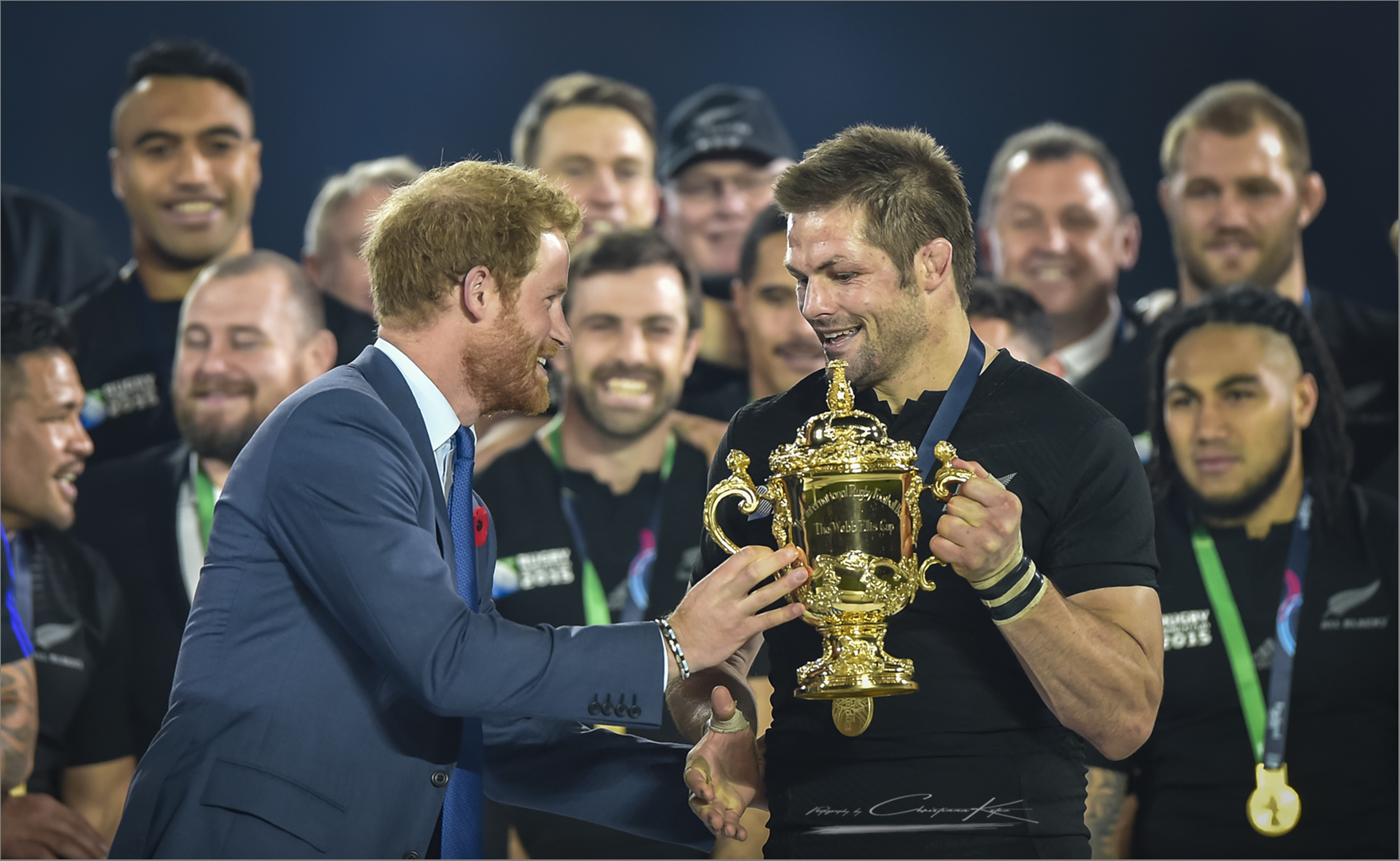
Are there any specific sports or teams you enjoy photographing the most, and why?
My favourite sport is gymnastics. Nowadays, we don’t have many competitions like years back in South Africa. It is a difficult sport to master. The events are always indoors. Therefore, your exposure to capture freezeframe actions is hard to achieve. I excel in achieving great photos when the shooting circumstances are not great. Photographing the Springboks as a team sport is always exhilarating, and when you have a full stadium cheering them on and big planes flying over, you get goosebumps from those moments.
What are some of your most memorable sport-shooting moments?
I had the privilege to shoot the 1995 Rugby World Cup Final at Ellis Park when the Springboks won the Web Ellis trophy for the first time. I was fortunate to photograph the Springboks again in 2007 when they won the cup for the second time at the Stade de France in France. I have also photographed 150 Springbok test matches, locally and abroad. I got to photograph Usain Bolt winning his first 100m Olympic Gold medal at the Olympic Games in Beijing in 2008. Then again eight years later, when he won his 3rd 100m Olympic Gold in Rio, Brazil. I’ve had the privilege of photographing 4 Rugby World Cups, Two Olympic Games, One Soccer World Cup and one Cricket World Cup.
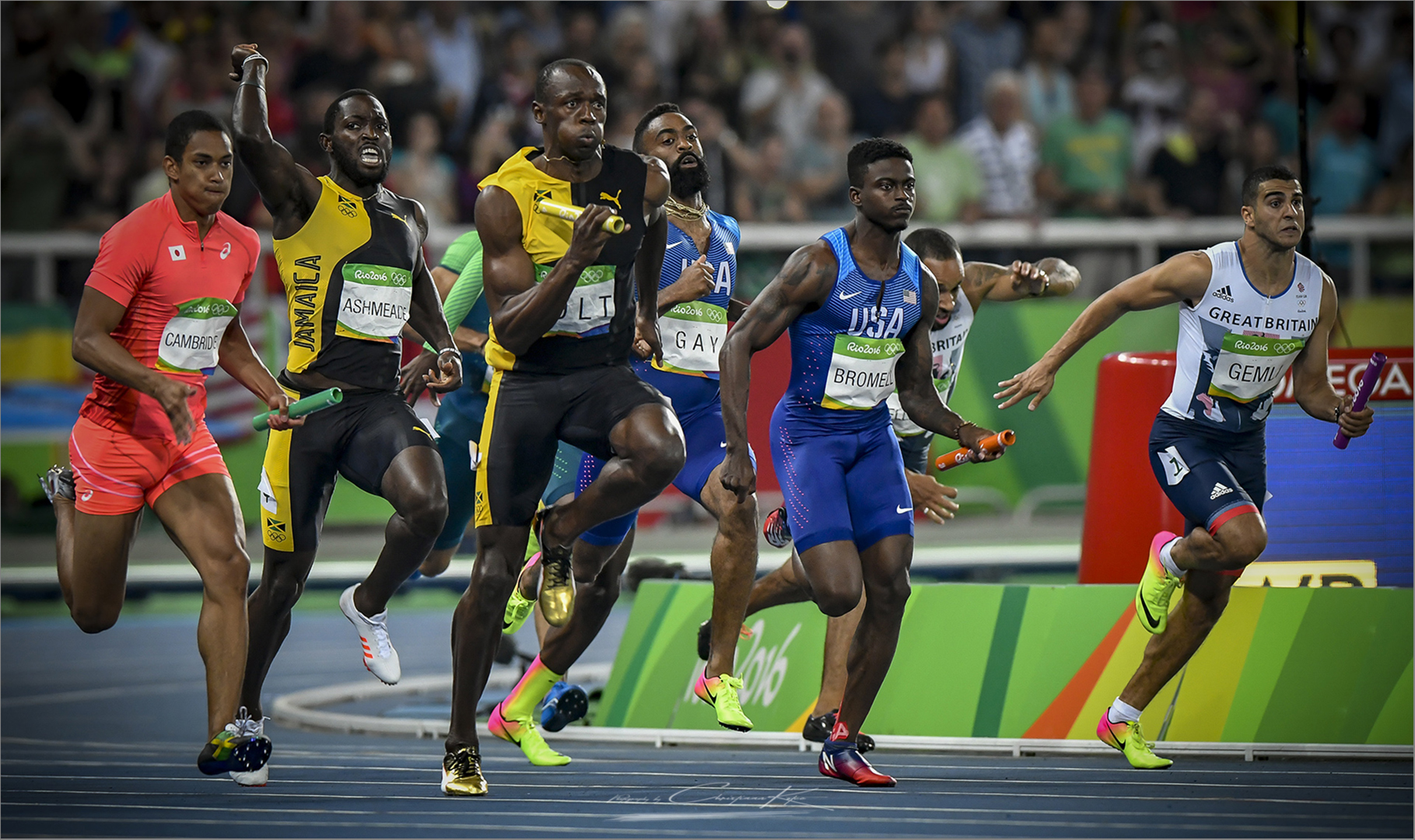
Sports photography involves working with athletes, coaches, and event organisers. How do you build relationships and communicate effectively with them to get the shots you need?
Firstly, you need to build a relationship with the Media managers of the different sporting codes you work with. Always be humble and respectful towards the people you work with. Never do things that you are not permitted to do. Sports Photography IS NOT Portrait photography with a sports theme where you use athletes and coaches to portray a specific genre. For this kind of photography, you have to work with player agents and managers to do off-field advertising-type shots. Most of the time, when shooting sporting events, the shots that you NEED are from your ability to read and understand the game and then capture the moments instantaneously by always being ready, knowing your camera equipment and how to set it up to achieve those moments when it presents itself. When shooting sports during events, you may not communicate with the athletes, coaches, etc. You need to capture what happens in front of your lens. In a sense, you are documenting an event to be a true representation of what happened during that event. We’re shooting spontaneously, trying to catch the athlete in action. An entire event can last only a few seconds. There’s no time to pose the athletes or to adjust the lighting. You better be prepared, or you could miss the shot of the day or even the photograph of the Games.
Sports photography often involves tight deadlines for delivering images. How do you manage your workflow and ensure timely delivery of photos to clients or publications?
You must know the equipment you use 100%. You need to concentrate 100% for the entire duration of the event. For workflow management, there is one tool that is used by all Photojournalists. Photo Mechanic is the most important programme that you need. Then Photoshop and or Lightroom. As a photojournalist, the most important thing you have to do is add the correct metadata to your images before they get sent anywhere. You can have the best shot, but without the Who, the What and the Where embedded in the image, that image will go into a black hole where you cannot search for it.
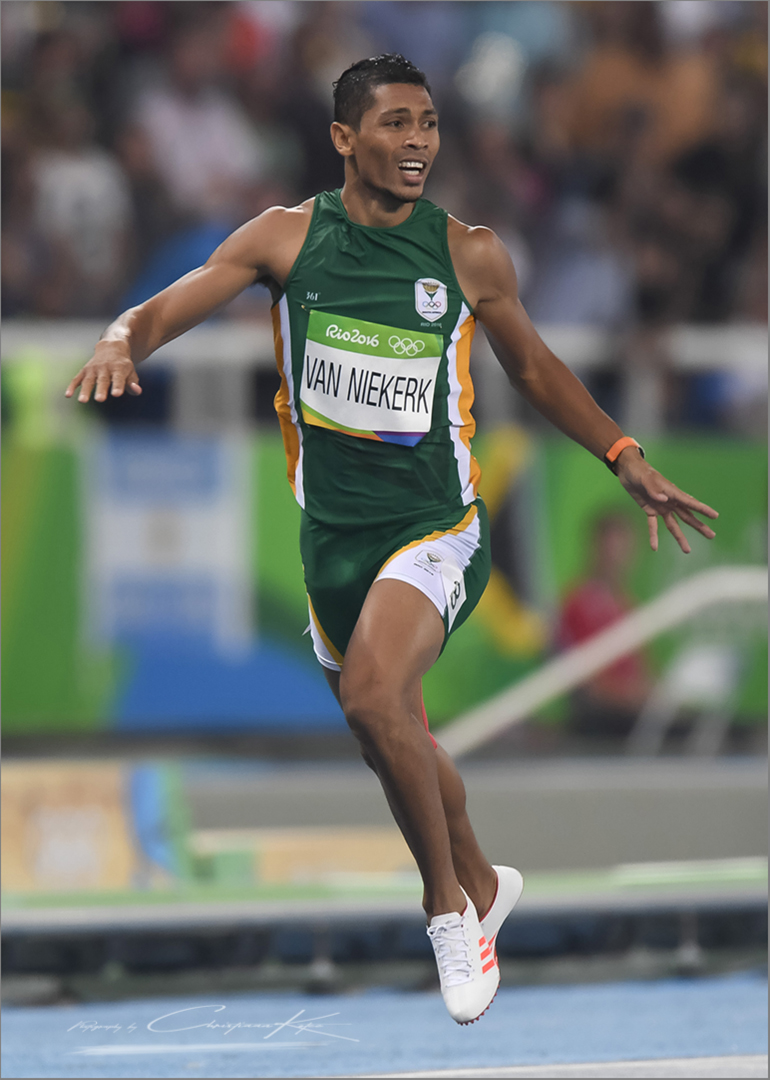
You need to do your homework before you go to your event. Photo Mechanic lets you set up IPTC data files that can be added simultaneously when you export your images from your memory card. You need to find the team list of the teams you will be photographing, and with the special codes in Photo Mechanic, you can make a code replacement file that will help you add the players’ names quickly during your edit. This IPTC metadata is then embedded with the Jpeg images you send to your clients. The clients will have similar computer programs to read those embedded IPTC data. Remember to shoot with the correct exposure and crop in camera! The better the file you import to your computer the less time you have to spend on it to fix things.
Now you need WIFI to be able to transmit those images. Sometimes at big events, the event organisers will provide WIFI for the media. You now need a special FTP (File Transfer Protocol) program that enables you to transmit directly into your client’s receiving program. Today this is a nonstop feeding of the beast. With the Internet and social media today, clients want their images immediately. The word is LIVE filing. You will edit and transmit your images while still shooting the event. You need to keep your wits together to manage such a workflow.
Sports photography can sometimes be physically demanding, requiring you to move quickly and carry heavy gear. How do you stay physically fit and ready for the job?
Stay young!!!!. Use the stairs instead of a lift. This will often help you get to a position quickly where you have to fight your way through a big crowd. Consolidate your equipment into two working bags. A backpack for your computer and all its bells and whistles you need. The older you get, the more important it is to have a roller bag that can fit all the equipment you need. This roller bag NEEDS to be Airline-certified if you frequently travel to destinations worldwide. Think Tank and Lowepro are some of the best bags for this job. Also, try to pack only what you will use.

What camera do you shoot with? Which lenses do you prefer to shoot with?
Currently, I shoot with Nikon cameras. Nikon and Canon are the preferred gear for photojournalists. They are robustly built and can handle the rough and tumble of a professional Sports photographer. I also use a 70-200 f2.8 and a 24-70 f2.8 lens. The f2.8 lens allows you to shoot in low light conditions and has the added benefit of getting nice out-of-focus backgrounds because of the small Depth of Field that an f2.8 gives you.
In your opinion, what are some common mistakes that sports photographers make?
Get to know the sport that you are shooting, know the play and players. DO NOT CHIMP on your LCD screen continuously. You will miss important shots.
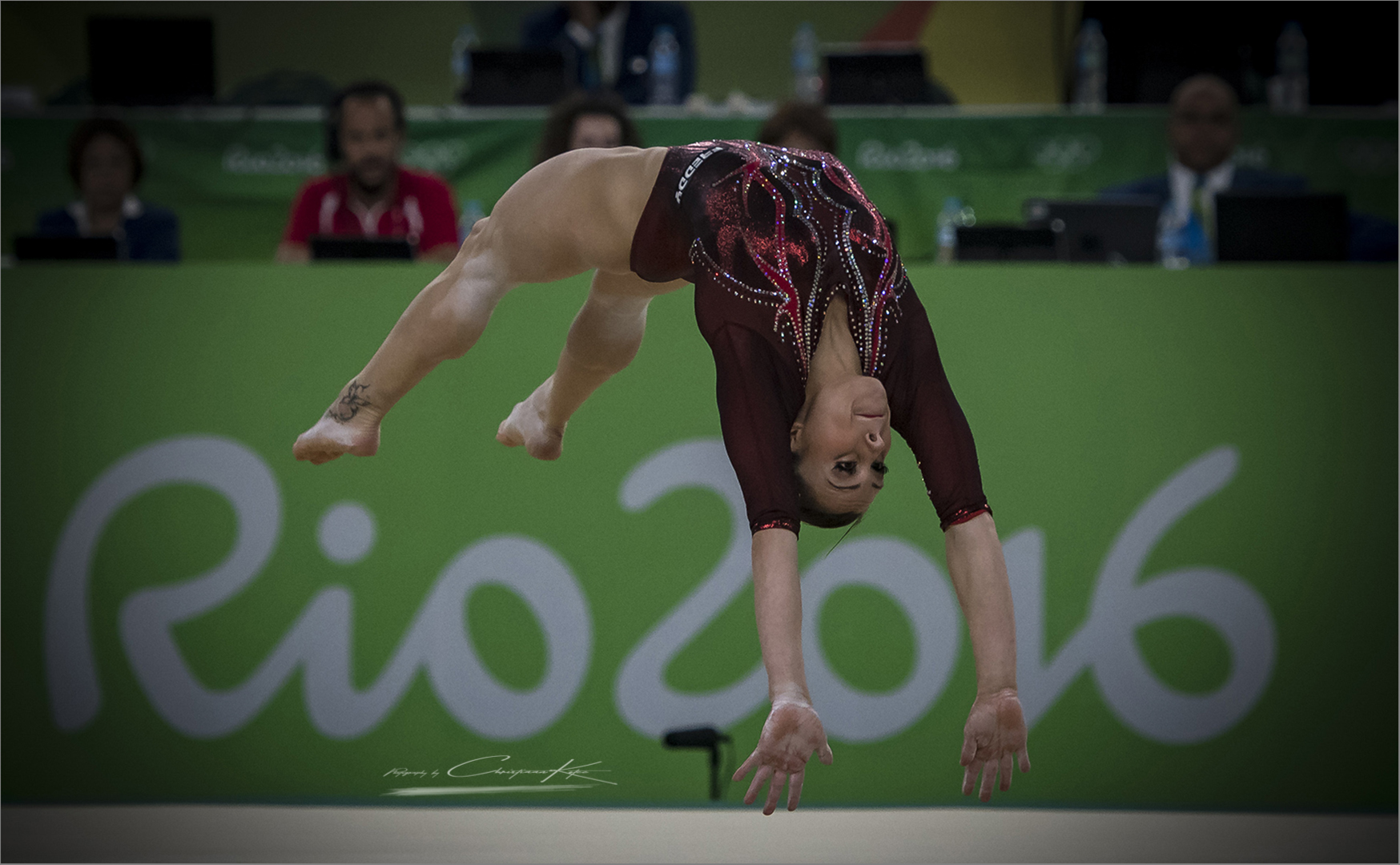
You mentioned that you’re going to the Paris Olympics next year. Which sporting events are you most looking forward to shooting and why?
As I mentioned, I love Gymnastics, so will definitely shoot that. Swimming is a must, there is always a great atmosphere and fantastic competition. The athletics is also a highlight. I will also shoot fencing again. This is one of the most dynamic sports to get extraordinary images. At the Olympics, the fencing venue is set up so fantastically that great photography is almost guaranteed. Then I will try and shoot something I have never done before. 5 new sporting codes will be entered at the 2024 Paris Olympics, including break dancing, sport climbing, skateboarding and surfing.
How does one get involved with shooting big sporting events like the Olympics or the World Cup?
You need to be working media. You need to be affiliated with a national or international photo agency or newspaper and media.
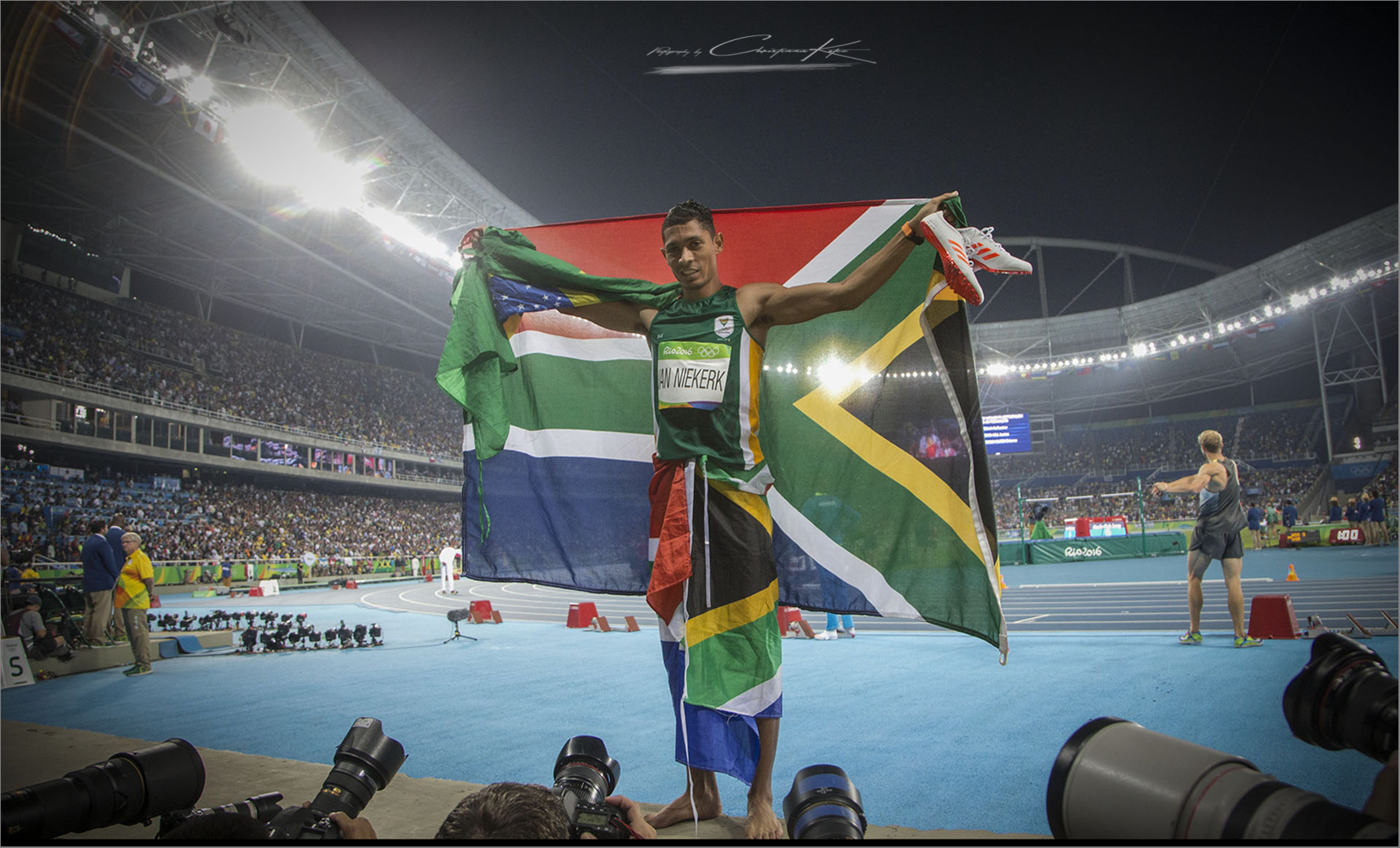
Please give us five tips for photographing major sporting events.
- Know the sport that you will be photographing”.
- Know your equipment.
- Be punctual.
- Be courteous to your fellow photographers.
- Make sure you have enough memory cards and that your camera batteries are charged.”
Anything else you’d like to add?
Getting to be an International sports photographer takes long hours of dedicated work and many years to reach that standard.

